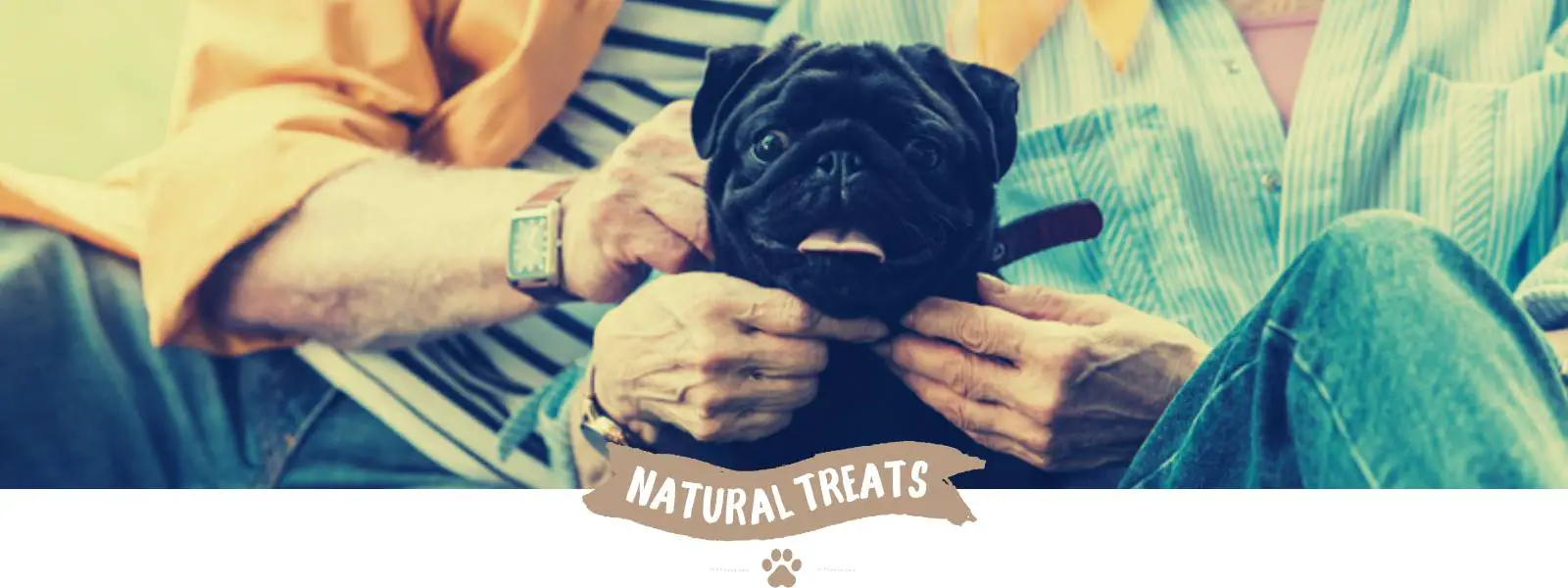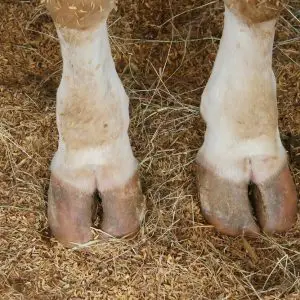Have you ever come across rabbit feet being sold and wondered if they would be a nice treat for your dog? Maybe you raise or shoot rabbits and are looking for some way to use the waste products? Or maybe you’re looking for a new natural treat for your dog?
Rabbit feet can be fed to dogs and might be the treat for you! So if you’re wondering how they should be prepared, if the bones and hair are safe, and what the health benefits are, read on to find out more.
Key facts
Rabbit feet can be given to your dog dehydrated, frozen or fresh with the hair on.
Rabbit feet help improve joint health and dental health as well as reduce worm burdens. They are also very nutritious, and contain many minerals.
Rabbit feet are high in protein which is a novel protein and therefore hypoallergenic. Therefore, it is suitable for most dogs with food allergies.
Potentially rabbit feet could cause a blockage if your dog doesn’t chew it, or you feed too many.
Great alternatives to rabbit feet include rabbit ears, chicken feet and beef tendons.
What Are Rabbit Feet?
Rabbit feet are exactly what they sound like; the feet of rabbits. They can be fed to your dog completely unaltered, with the hair on. They are commonly prepared in two different ways; thawed from frozen or dehydrated.
Rabbit feet are quite difficult to source as they are not mass produced like cows or chickens. As a result, a constant supply can be tricky to find, making rabbit products better suited as a special treat for your dog. Typically, companies which sell rabbit feet source them locally from small farms and rabbit fanciers. However, it’s not uncommon for owners to feed rabbit feet to their dogs after shooting the rabbit themselves or their dog catching one.
Fresh & Frozen Rabbit Feed
Frozen rabbit feet are completely non-processed. They are simply cut off the rabbit and immediately frozen. This slows the growth of bacteria, and if frozen in a deep freezer for over two weeks, increases the chances of killing off tapeworms too. Frozen rabbit feet can be thawed in the fridge before giving to your dog or fed straight from frozen. As with all raw food products, it’s important to maintain strict hygiene measures to prevent contaminating your hands and home with bacteria.
Dried Rabbit Feet
Dehydrated rabbit feet are dried at a low heat (around 60 degrees Celsius), often in a dehydrator. A heat higher than this could cause the bones to become brittle making them dangerous to dogs. However, drying at a low heat ensures they still stay soft and are easily digested.
There is little difference between the benefits of dehydrated or frozen rabbit feet, and so it is down to personal preference which format you give your dog.
Benefits of Rabbit Feet for Dogs
Rabbit feet are very healthy, low-fat treats which contain plenty of minerals and natural compounds to boost immunity, gut health and joint health. They also aid in the general upkeep of your dog’s dental hygiene.
Rabbit feet are low in fat and high in protein. They also contain high levels of selenium, manganese, calcium, glucosamine and chondroitin.
Dogs eat an omnivorous diet, but it should contain a large portion of animal proteins. These are used to build DNA, strengthen muscles, and create hormones. Rabbit protein in particular, is relatively hypoallergenic because it is a novel protein for most dogs. Therefore, dogs with food allergies rarely react to rabbit protein.
Manganese, selenium and calcium are all essential minerals. Manganese helps reduce inflammation and improves metabolism. Selenium is an anti-oxidant, boosts your dog’s immune system and also plays a role in metabolism processes. And calcium is vital for strong bones and muscles. Puppies shouldn’t be overfed calcium though, as their body needs a fine balance of bone producing minerals to ensure the bones develop correctly. That is why a balanced commercial diet with just the occasional treat is best for puppies.
Glucosamine and chondroitin are natural compounds which are found in connective tissues, ligaments and cartilage. They help improve the health of joints and have been clinically proven to improve pain and weight-bearing in dogs with osteoarthritis. However, a high enough concentration of these are needed, and they need to be fed on a regular basis, so since natural compounds vary from one product to another, and rabbit feet are likely to just be a rare occasional treat, joint supplements are probably a better alternative. In addition to this, feeding glucosamine and chondroitin, whether natural or in a supplement form, is not a substitute for seeing your vet to diagnose and treat your dog’s joint problems.
Official nutritional information about rabbit feet does not exist, and as a result it’s impossible to detail the exact percentages of protein, fat and calories a rabbit foot has. However, rabbit products have been proven to be higher in protein, lower in fat and lower in cholesterol than chicken, beef or pork.
Rabbit feet also have other benefits, other than their nutritional components. Rabbit hair is made up of indigestible fibre. It is believed to play a role in clearing the digestive tract of worms due to the gentle physical abrasion it applies as it passes through. It’s important to note two things though; firstly, rabbit hair has not been proven to be as effective as a clinical dewormer, and secondly, since rabbit hair is indigestible, if too much is fed it could cause a blockage.
Finally, rabbit feet contain bones. Rabbit feet bones are extremely thin and fine, and therefore don’t generally cause problems when consumed. The exception is when they have been cooked at a high temperature as then they can become brittle, but dehydrating is generally done at a low temperature. The bones create a crunchy texture to rabbit feet, which helps clean the teeth as your dog bites through. This is because they create abrasion on the surfaces of the teeth, scraping away food build up and reducing plaque. However, dental hygiene is most effectively managed with brushing, and so giving the occasional crunchy treat shouldn’t be a substitution for regular brushing.
Feeding Guide
Rabbit feet can be fed occasionally as a treat or part of a balanced diet. They are ideal to be given a few times a week, but you are likely to be limited by their availability, and therefore might not be able to feed them as frequently as that.
Disadvantages & Risks of Rabbit Feet for Dogs
A Very Safe Treat
Rabbit feet present no risk to dogs unless they are cooked (in which case the bones could splinter and damage your dog).
Rabbit feet are generally considered safe for adult dogs who crunch their food properly. The foot can pose a risk if it is not bitten through, and could get lodged, causing choking if not bitten into smaller pieces.
Generally, small rabbit bones, such as those in the feet, are soft and small. They don’t splinter or cause traumatic damage (as long as they are not cooked), and they are fully digestible. However, it is still important to watch your dog when he is eating to ensure he chews the rabbit foot properly.
Rabbit Feet for Puppies

Rabbit feet certainly have plenty of benefits for puppies, to help them with those itchy gums when teething, and minimise worm burdens. However the high calcium content is a bit worrying. Calcium imbalances can cause problems with growing bones and therefore you need to be a bit careful with how many rabbit feet you give your puppy.
As a guideline, your puppy shouldn’t be offered rabbit feet before 16 weeks old, and ideally wait until six or seven months when he has most of his adult teeth, just to make sure he can crunch through the rabbit foot properly. Between that age and when he’s fully grown (which can be up to 15 months), rabbit feet should be reserved for extra special treats, and not fed on a regular basis.
Alternatives to Rabbit Feet
Thinking about giving your dog rabbit feet but not quite sold on them yet? Why not try one of these alternatives?
- Rabbit ears: These are very similar to rabbit feet, but without the bones. They are primarily made up of cartilage, skin and hair, so they do not provide as much nutrition as rabbit feet. Nevertheless, they still have similar properties in terms of hair to reduce worm burdens, and glucosamine and chondroitin to improve joint health.
- Chicken feet: Like rabbit feet, chicken feet contain bones and lots of connective tissue for your dog to crunch through. They are also nutritious and healthy. However, they do not contain hair, so if that worries you, then they might be a better alternative.
- Beef tendons: While beef tendons are very different treats to rabbit ears, they do provide many of the same benefits. They are high in glucosamine and chondroitin, which improves joint health, they are great to chew, which improves dental health, and they are high in protein.
FAQs
Rabbit feet are very healthy, low-fat treats which contain plenty of minerals and natural compounds to boost immunity, gut health and joint health. They also aid in the general upkeep of your dog’s dental hygiene.
Rabbit feet can be fed occasionally as a treat or part of a balanced diet. They are ideal to be given a few times a week, but you are likely to be limited by their availability, and therefore might not be able to feed them as frequently as that.
Rabbit feet are generally considered safe for adult dogs who crunch their food properly. The foot can pose a risk if it is not bitten through, and could get lodged, causing choking if not bitten into smaller pieces. If you are worried about this then you should supervise your dog while feeding them rabbit feet,
It depends how squeamish you are about whole, hairy rabbit feet, as to whether you find them unpleasant to have in the house. Generally, rabbit feet are not particularly smelly, nor greasy. This is the case for both raw rabbit feet and dehydrated. However, as with all raw food, it is important to maintain proper hygiene when feeding them, so remember to wash your hands, and wipe down the surfaces and floor area it touched too.
It’s unlikely that rabbit feet will cause diarrhoea as they are low in fat. It’s usually fatty treats which trigger diarrhoea. However, as with all new foods, you should introduce them slowly to ensure your dog’s body doesn’t react to them.
If your dog crunches the rabbit feet and you only feed one at a time, the chances of a blockage is very slim. However, if swallowed whole, or you feed a whole packet of feet, they could cause problems as the hair is indigestible and in a clump, could be dangerous. You can prevent this by only feeding one rabbit foot, and supervise your dog at all times.
Rabbit feet, which are processed to sell as dehydrated feet, are usually harvested from small rabbit meat farms or rabbit fanciers. They are a meat by-product, and not the reason why a rabbit would be slaughtered. Rabbit feet can also be harvested from wild culled or hunted rabbits, if you know of any friends or family that like to go shooting.









